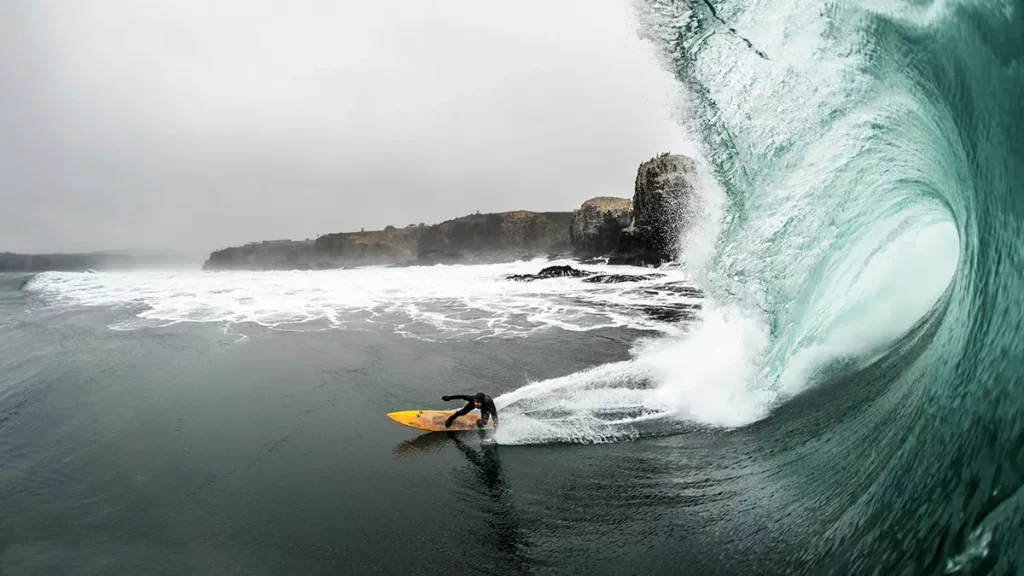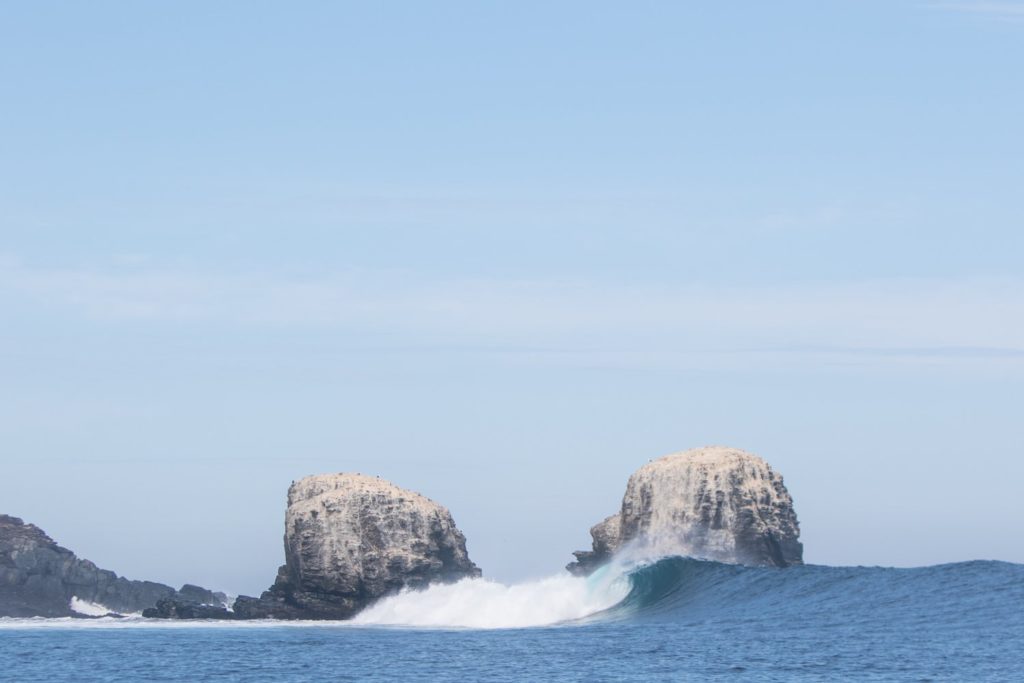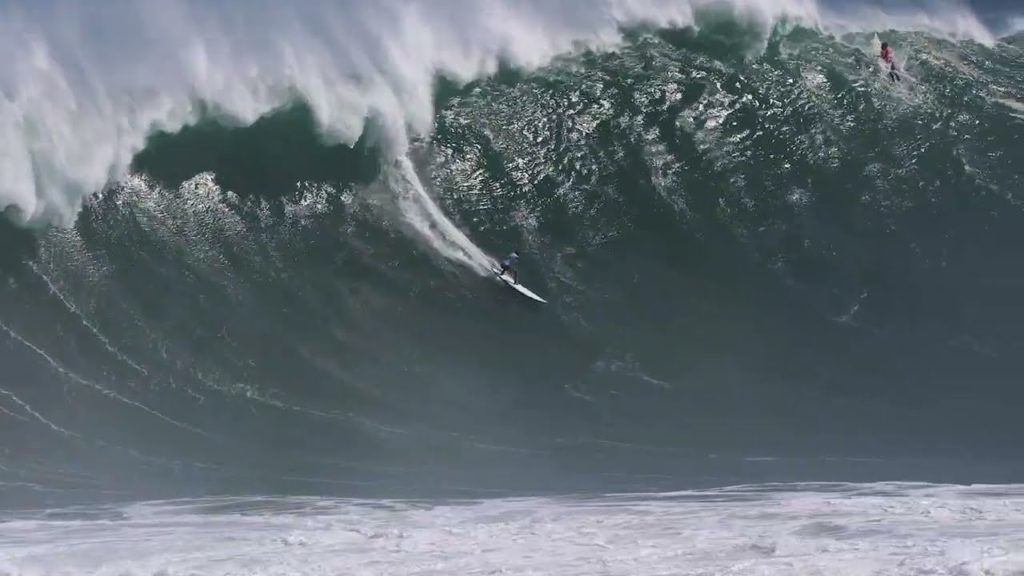
In January 2022, 20 miles of the North Devon coastline became the 12th World Surfing Reserve (WSR). The WSR mission is simple; to protect surf ecosystems across the globe. The vision is a world where surf ecosystems are valued and protected and where surfing provides a vehicle for long-term coastal conservation. The end goal is to protect 1,000 surf ecosystems by 2030.
In this series, we look at each WSR in depth. Having ticked off Noosa and Santa Cruz, this week it’s the Chilean wave of Punta de Lobos.
“It was a celebration of sports and to show that Punta de Lobos park belongs to everyone and we need everyone’s help to continue protecting it,” said Ramon Navarro, after claiming the Lobos Por Siempre (Save the Wolves) big wave event in Chile this week.
“Having this event again after these years is something that is greatly appreciated, for us as surfers, the entire public and especially for the children who are the future champions in this beautiful sport.”

In terms of popular and/or deserving winners, it might be harder to find a better candidate than Navarro. Not only was the Chilean surfer born and bred at Punta de Lobos, but he was also conceived at the end of the point. Now that’s what we call an immaculate conception. And no one has fought harder to protect and preserve the wave, the landscape, and the biodiversity of South America’s premier big wave location.

Back in 2015, Navarro was the figurehead of the “Lobos Por Siempre” campaign launched by Save The Waves and Patagonia. Initially, the goal was to raise enough money to purchase the 4.5-acre Mirador Property, the iconic homestead that sat at the very tip of Punta de Lobos. That campaign ran alongside their nomination to become World Surfing Reserve. In just two years with the help of Patagonia, the Marisla Foundation, Packard Foundation, Waitt Foundation, and over 900 small donors, $750,000 was raised to buy the property. The deeds were transferred and officially dedicated as a World Surfing Reserve in an intimate ceremony at Punta de Lobos on November 16th, 2017.
The Punta de Lobos campaign can be seen as the gold standard template for what WSR can achieve when surfers and environmental protection align in perfect symmetry. Punta de Lobos is one of the most iconic left-hand pointbreaks in the world and one of Chile’s best-known waves. It is incredibly consistent, breaking from three feet to 30 feet, and is sheltered from the dreaded, and almost daily, SW wind by the cliffs.
Lobos itself has many sections and moods, depending on the swell and tide. Between four and 10 feet, it offers one of the most rippable and bowly waves on the planet. As the swell increases, it starts to break out in front of the iconic twin rock pillars. For the big wave event just held, the conditions were considered to be the biggest waves ever seen at the iconic break. Surfers paddled and rode waves with faces 50-foot tall, and many larger waves went unridden.

On surf quality alone, Punta de Lobos would have been a worthy World Surf Reserve candidate. However, it is also part of a global biodiversity hotspot, boasting incredible marine and terrestrial resources. Upwelling from the Humboldt current brings cold, nutrient-rich water to the area, which attracts a variety of species such as Southern Right Whales, Fin whales, Southern Sperm whales, Orcas, common sea lions, sea turtles, Humboldt and Magellanic penguins, oystercatchers, cormorants, gulls, pelicans, and boobies. Matching marine life are several unique and endangered plant species that have stood for centuries above the high tide mark and beyond.
For many generations, the point is also the historic home to generations of artisanal fishermen who hand-harvest kelp, shellfish, and local fish species. One of these is Navarro’s father. The 2015 film “Fisherman’s Son”, documented the Navarro clan’s long and personal connection to Punta de Lobos. This was another pivotal movement in recognising the area’s surf history and environmental credentials.
“I’m over the moon to be a surfer and have the opportunity to share waves like that with friends,” he concluded after the 2022 Big Wave event. “But the more important message here is that when a community gets together, they really can protect a place. And as surfers, it is our responsibility to protect our waves.”
Fun Facts
The perfect day: A medium period large south-west swell has started huge and slowly dropped during a week. East-southeast offshore winds have kept the daily SW sea breeze at bay till late in the day. You simply get involved when the size drops to your comfort level, and spend endless days riding 500-yard lefts in one of the most beautiful surf locations on earth.
Getting there: Fly into the capital Santiago, and take the three-hour car drive or four-hour bus trip to the town of Pichilemu.
Boards: You’ll need everything from big wave guns to fun fishes. This wave has everything, so you’ll need a variety of craft to surf it in all its moods.
Essentials: Thick wetsuits, booties, hoods, and gloves as in prime time winter, water temps drop to 12 degrees celsius. Plenty of paddling power and some Spanish won’t hurt either.
Accommodation: Cheap and cheerful hotels, bed and breakfasts and loads of surf and backpacker hostels cater to the surfers that travel from all over the world to surf the iconic wave.
Other waves: There’s a range of more user-friendly lefts near the town of Pichilemu, while Chile’s 2700 miles of coastline is stacked with incredible waves of every description.
